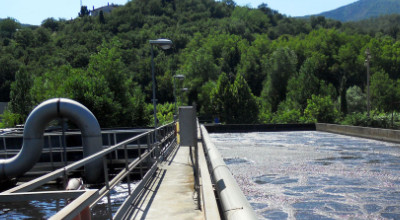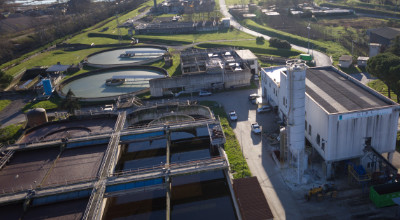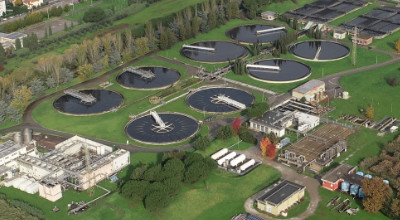Bisenzio Valley
Depuration Plants of Val Bisenzio
With a process that began in 1997, the depuration plants of the municipalities of Vaiano, Vernio and Cantagallo also became part of the system: they're all characterized by being located along the Bisenzio river and by treating discharges mainly originating from the textile industry. Also for these plants, the Company has provided, where necessary, structural adjustments.
Sewage Depuration Plant in Vaiano
The sewage depuration plant of Vaiano (30,000 P.E.), treats an average of 8,000 cubic meters/day on weekdays, reducing about 4,000 kg/day of COD and little less than 150 kg/day of surfactants. It basically consists of equalization, denitrification, biological oxidation, secondary sedimentation and final ozonation.
The sludge line consists of gravity thickening, aerobic digestion and mechanical dewatering with centrifuge. The sludge resulting from the purification process amounts to about 2,000 t/year at 18% of D.M.
Sewage Depuration Plant in Vernio
The sewage treatment plant of Vernio (30,000 P.E.), on weekdays, treats an average of 7,000 cubic meters/day, reducing about 4,000 kg/day of COD and little less than 100 kg/day of surfactants. It basically consists of equalization, biological oxidation and secondary sedimentation. It is also planned to install a final filtration section for the reduction of suspended solids. The sludge line consists of gravity thickening, aerobic digestion and mechanical dewatering with belt press. The sludge resulting from the purification process amounts to about 1,500 t/year at 20% of D.M.
Sewage Depuration Plant in Cantagallo
The sewage treatment plant of Cantagallo (35,000 P.E.), on weekdays, treats an average of 10,000 cubic meters/day, reducing about 4,000 kg/day of COD and just under 100 kg/day of surfactants. Basically, it consists of equalization, denitrification, biological oxidation, secondary sedimentation. The peculiarity of this plant is to be completely covered. It is also planned to install a final section followed by ozonation for the reduction of color. The sludge line consists of gravity thickening, aerobic digestion and mechanical dewatering with centrifuge. The sludge resulting from the purification process amounts to about 1,500 t/y at 20% of D.M.





